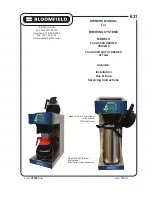
8611311
180 MULTI-PROCESS MIG-ARC-TIG WELDER
V1.0
6
For technical questions call 1-800-665-8685
FIRE AND EXPLOSION PRECAUTIONS
Arc welding can produce sparks, hot slag or spatter, molten metal drops and hot metal parts
that can start fires.
1. Clear the floor and walls of an area of all combustible and/or flammable materials up to
39 ft (12 metres) away from the welding unit. Hot debris ejected during welding can land
at a considerable distance away. Solid floors of concrete or masonry is the preferred
working surface.
1.1 Cover any combustible material with fire resistant covers or shields, if it cannot be
removed. The covering must be tight and should not leave openings for sparks or
ejected slag to enter.
1.2. Check both sides of a panel or wall for combustible material. Remove the combustible
material before welding.
2. A combustible floor should be protected with a fire resistant covering. Alternatives are to
spray the floor with water to keep it wet for the duration of the welding or cover with damp
sand. Care must also be taken to avoid an electric shock when this is done. A combustible
floor directly laid onto concrete does not need to be sprayed with water.
3. Seal cracks and openings to adjacent areas that a spark or slag can enter. Seal any openings
found with a fire-resistant cover. Shut doors and windows that do not provide ventilation or
erect protective screens in front of them when possible.
4. Avoid welding near hydraulic lines or containers containing flammable contents.
5. Do not perform any welding work on containers that held flammable or toxic substance
until they are cleaned by a person trained in removing toxic and flammable substances and
vapours per the American Welding Standard AWS F4.1.
6. Open a container before performing any welding work on it. The heat generated by the
welding process will cause the air and gases to expand. The internal pressure may cause a
sealed or closed container to rupture, possibly causing an injury or death.
7. Do not weld pipes or metal that are covered in combustible material or in contact with
combustible structure such as a wall. Only weld if the covering can be safely removed.
7.1 Follow all safety precautions and legal requirements before welding a workpiece that
contains Asbestos or attempting to remove the Asbestos covering. This requires expert
knowledge and equipment.
7.2 Molten slag can run down the inside and outside of a pipe and start a fire. Be aware
where the pipe terminates and take precautions.
8. Do not weld a panel that is a sandwich construction of combustible and metal materials.
9. Have a fire extinguisher available for immediate use. A dry chemical fire extinguisher for
Types A, B and C is suggested.
9.1 Welding a combustible metal like zinc, magnesium or titanium requires a Type D
fire extinguisher.
9.2 Do not use liquid based fire extinguishing methods near the electric arc welding unit, as
it may cause a shock hazard.
10. Ventilation systems should be positioned so sparks or molten slag isn’t carried to an
adjacent area.
11. Have a Fire Watcher observing areas outside of the welder’s view, such as the opposite side
of a wall or behind the welder. A fire may also start on the other side of a structure that
could not be removed. The Fire Watcher will extinguish a fire or raise the alarm to evacuate
if the fire cannot be contained by the extinguishing equipment.
11.1 A fire watch extends at least 30 minutes after the welding is complete to ensure there
are no fires caused by smoldering sparks or ejected material.







































